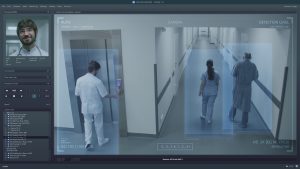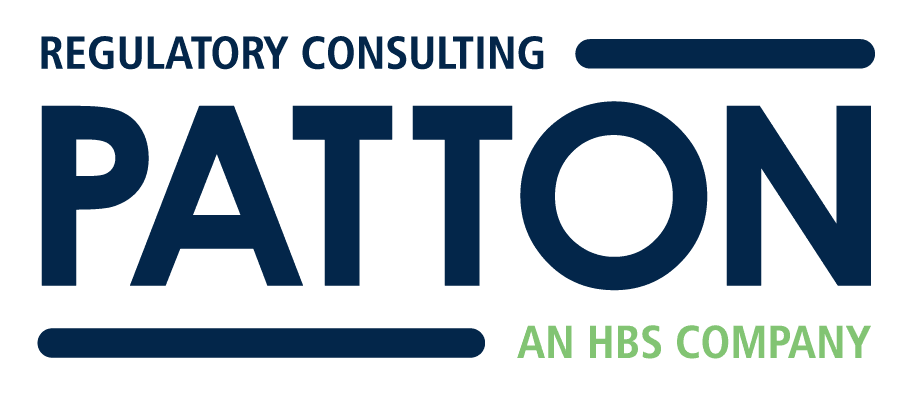November 2025
Inside This Issue
Accreditation 360:
 This month’s edition of Perspectives is similar to last month with promotion of new concepts that are a part of their Accreditation 360 initiative, but there are no surprises that would cause you to change your plans for the month. They shed a little more light on their continuous engagement model indicating they will be offering remote touchpoints of 1-4 hours duration and one full day onsite per three (3) year cycle. It appears their focus will be on corrective actions taken and sustainment plans. Consultation with us here at Patton or other firms including JCR sounds like it would provide more face to face time on site.
This month’s edition of Perspectives is similar to last month with promotion of new concepts that are a part of their Accreditation 360 initiative, but there are no surprises that would cause you to change your plans for the month. They shed a little more light on their continuous engagement model indicating they will be offering remote touchpoints of 1-4 hours duration and one full day onsite per three (3) year cycle. It appears their focus will be on corrective actions taken and sustainment plans. Consultation with us here at Patton or other firms including JCR sounds like it would provide more face to face time on site.
Remote DSC Review:
Perspectives includes additional details on Joint Commission’s (JC) plans for an off-site review option for advanced cardiac and stroke programs. Participation in the remote option is not mandatory but open to selection providing your state does not mandate an onsite review.
 The programs eligible for this remote survey option include nine (9) advanced DSC programs including:
The programs eligible for this remote survey option include nine (9) advanced DSC programs including:
- Acute heart attack ready
- Acute stroke ready hospital
- Comprehensive cardiac center
- Comprehensive heart attack center
- Comprehensive stroke center
- Heart failure
- Primary heart attack center
- Primary stroke center
- Thrombectomy-capable stroke center
The JC indicates that the remote option will be more cost effective, but pricing details were not included. There is a link to “learn more” but when we checked it brought us to an advertisement rather than more details. They also suggest contacting your account executive for assistance.
ORYX Performance Measures 2026:
Perspectives has an article detailing Joint Commission’s (JC) requirements for ORYX data reporting for 2026 and their measurement requirements are somewhat reduced. Large hospitals with obstetrical services will have to report severe hypoglycemia, severe hyperglycemia, cesarean birth, unexpected complications in newborns, and severe obstetrical complications. They also suggest an optional measure for severe hypertension.
 The JC’s ORYX program indicates that hospitals will no longer have to participate in the NHSN program, however CMS will still be using it. We also checked the 2026 hospital standards manual, and it appears to still be a JC requirement for NPG.14.06.01 on antibiotic stewardship. This refinement for the ORYX program does not change CMS’ very robust expectations for the inpatient quality reporting program, value based purchasing, hospital acquired conditions and hospital readmissions reduction programs.
The JC’s ORYX program indicates that hospitals will no longer have to participate in the NHSN program, however CMS will still be using it. We also checked the 2026 hospital standards manual, and it appears to still be a JC requirement for NPG.14.06.01 on antibiotic stewardship. This refinement for the ORYX program does not change CMS’ very robust expectations for the inpatient quality reporting program, value based purchasing, hospital acquired conditions and hospital readmissions reduction programs.
 Ambulatory Surgical Centers Requirements:
Ambulatory Surgical Centers Requirements:
The October issue of EC News has a great article discussing 35 more stringent requirements for ambulatory surgical centers, that would not apply to non-surgical ambulatory accredited facilities. These additional requirements are in the life safety code and environment of care chapters. The issues discussed as potentially problematic include a written inventory of medical equipment, inspection, testing and maintenance of that medical equipment, temperature, humidity and air pressure expectations for surgical facilities. Hospitals struggle with many of these same issues and ASCs with potentially fewer facilities staff find these issues to be difficult also.
If you have an ASC, this article would be good to share with their clinical leaders and facilities management. After they have had a chance to assess their compliance, a review with your quality department to discuss how the required processes are carried out, and where evidence of compliance is documented is suggested.
Forensic Patient Management:
 EC News has a potentially thought provoking article on managing patients brought into the hospital by police or correctional facilities. There is an informative link to a paper prepared by the International Association of Healthcare Security and Safety Foundation that points out some examples of escapes from the hospital, but more importantly some suggested practices to make the care safer and more secure.
EC News has a potentially thought provoking article on managing patients brought into the hospital by police or correctional facilities. There is an informative link to a paper prepared by the International Association of Healthcare Security and Safety Foundation that points out some examples of escapes from the hospital, but more importantly some suggested practices to make the care safer and more secure.
They suggest trying to pre-identify rooms that might be best logistically for securing a prisoner as well as bringing prisoners in through the ambulance bay using a wheelchair which permits handcuffing the inmate to the wheelchair as they are transported through the hospital to their assigned room. They also recommended inspecting the meal tray to ensure that no potential weapons have been delivered. There is a second link to a media report discussing the frequency of escapes, but the first link from IAHSS has more substantive information.
EC News also points out the interface between the workplace violence assessments and your frequency of caring for inmates as you may want to enhance training for staff.
Fire Extinguisher Requirements:
 The November issue of EC News has another helpful article this month pointing out the detailed requirements for placement and inspection of portable fire extinguishers. The article discusses the format of the relevant standards and elements of performance for 2026 where key details explaining the requirements have been removed. The authors point readers to the 2026 survey process guide and “concise” description on page 449 of the Survey Process Guide, identifying K-Tag 355 as having a “concise” description. It reiterates the pertinent NFPA standards, but unfortunately, we don’t see the detailed requirement as in the current LS.02.01.35, EPs 10 and 11. Readers should ensure they have all the cited NFPA references for the missing detailed requirements or keep their 2025 manual handy in 2026.
The November issue of EC News has another helpful article this month pointing out the detailed requirements for placement and inspection of portable fire extinguishers. The article discusses the format of the relevant standards and elements of performance for 2026 where key details explaining the requirements have been removed. The authors point readers to the 2026 survey process guide and “concise” description on page 449 of the Survey Process Guide, identifying K-Tag 355 as having a “concise” description. It reiterates the pertinent NFPA standards, but unfortunately, we don’t see the detailed requirement as in the current LS.02.01.35, EPs 10 and 11. Readers should ensure they have all the cited NFPA references for the missing detailed requirements or keep their 2025 manual handy in 2026.
Preventing Workplace Violence:
 EC News has a nice summary article on workplace violence standards that looks like it could be used as a self-assessment of readiness. The authors highlight the requirements generally, then focus on education, worksite analysis, using bullet points to describe key expectations. For example, one key content point states: “Provide training, education and resources (at the time of hire, annually, and whenever changes occur regarding WPV prevention program) to leaders, staff, and licensed practitioners, based on their roles and responsibilities.”
EC News has a nice summary article on workplace violence standards that looks like it could be used as a self-assessment of readiness. The authors highlight the requirements generally, then focus on education, worksite analysis, using bullet points to describe key expectations. For example, one key content point states: “Provide training, education and resources (at the time of hire, annually, and whenever changes occur regarding WPV prevention program) to leaders, staff, and licensed practitioners, based on their roles and responsibilities.”
Readers may want to use these bullet points to ask follow-up questions such as, what is different in our training for different job sites and titles? For example, business office staff vs. a medical surgical unit vs emergency room vs inpatient psychiatry? In addition, you could examine differences in training by job title, physicians vs. nursing vs. behavioral health technicians vs. clerical staff. As the standards call for a designated leader for the WPV program, this refresher may be a helpful tool to dig deeper into readiness.

Workplace Violence Case Study:
The October issue of EM Leader has a case study describing initiatives on workplace violence at Saratoga Hospital in upstate New York. They had a stabbing incident two years ago that lead to multiple program enhancements.
One they describe is AI sound detection technology added to their security cameras. Now if someone makes a loud noise like slamming a chair, yelling or firing a gun, the camera detects that sound zooms in on the individual and alerts security. If you have ever looked at the huge bank of video displays that staff are trying to monitor, this sounds like a great enhancement. They are also planning to install a link that will allow local law enforcement to tie into the system so, if called, they can better plan how to approach and manage the incident. Take a look, there are many helpful ideas presented.
Comprehensive Emergency Management Plans:
 EM Leader has a Q+A article about comprehensive emergency management plans. It’s not a term we were familiar with, but a quick search found it to be frequently used in colleges and governmental organizations for their EM planning. But the article makes it clear that this high level document is not a substitute for the required Emergency Operations Plan (EOP) and Continuity of Operations Plan (COOP). While thinking about the required documents for EM planning, we noted the very helpful tool the Joint Commission created in their new 2026 Survey Process Guide on pages 575-578. Having your EM leader complete this and go through an interview Q+A with quality staff may be an excellent way to verify you have all the required documentation in place for EM readiness.
EM Leader has a Q+A article about comprehensive emergency management plans. It’s not a term we were familiar with, but a quick search found it to be frequently used in colleges and governmental organizations for their EM planning. But the article makes it clear that this high level document is not a substitute for the required Emergency Operations Plan (EOP) and Continuity of Operations Plan (COOP). While thinking about the required documents for EM planning, we noted the very helpful tool the Joint Commission created in their new 2026 Survey Process Guide on pages 575-578. Having your EM leader complete this and go through an interview Q+A with quality staff may be an excellent way to verify you have all the required documentation in place for EM readiness.
 Family Reunification Tabletop Exercise:
Family Reunification Tabletop Exercise:
Hospital standard NPG.03.03.01, EP 2 for 2026 describes the need for the disaster recovery plan to include plans for family reunification. The October issue of EM Leader includes two downloadable documents that may be helpful resources to planning how to meet this need. The first document is a tabletop exercise playbook and the second is more probative questions and scenarios exercise that might help think through potential responses to meet this need. Be sure to download these and share with your EM leader and team.
![]()
DNV: Symposiums:
They held their 2025 symposium last month in California and they have announced that their 2026 symposium will be held in Wisconsin on October 26-29, 2026.
CIHQ: November Webinars:
![]()
They are offering a webinar on November 25th on the recent updates to the CMS state operations manual for hospitals. You can access the link to register on their Updates to the CMS Interpretive Guidance for Hospitals page. As we mentioned last month, they also have another webinar planned for November 21st on the top findings in the environment of care. You can register for that webinar using this Top Findings in the Care Environment page.
![]()
ACHC: New Blogs:
They have three new blog postings this month. The first is a detailed summary of common ASC deficiencies found on survey. The second article is about Office Based Surgery (OBS) contractor oversight and QAPI. The third posting is about sleep survey deficiencies. All three (3) postings can be accessed through their Articles page.
State Surveys During Federal Government Shutdown:
 CMS posted one new QSO memo during the past month and they revised it on October 21st. This is QSO 26-01 discussing the Federal Government shutdown and the implications for CMS survey activity. During the budget shutdown CMS will not authorize the states to conduct any routine surveys on its behalf. CMS indicates they will only authorize what they call “excepted” activities, which are otherwise known as essential activities. For example, during the shutdown state surveyors are allowed to conduct complaint investigations that credibly allege patient harm, which could be an immediate jeopardy situation. These can be done without seeking prior approval. CMS will also permit follow up surveys to be conducted where the provider may be at risk of termination if the follow up is not conducted and compliance verified. These must be prior approved.
CMS posted one new QSO memo during the past month and they revised it on October 21st. This is QSO 26-01 discussing the Federal Government shutdown and the implications for CMS survey activity. During the budget shutdown CMS will not authorize the states to conduct any routine surveys on its behalf. CMS indicates they will only authorize what they call “excepted” activities, which are otherwise known as essential activities. For example, during the shutdown state surveyors are allowed to conduct complaint investigations that credibly allege patient harm, which could be an immediate jeopardy situation. These can be done without seeking prior approval. CMS will also permit follow up surveys to be conducted where the provider may be at risk of termination if the follow up is not conducted and compliance verified. These must be prior approved.
The memo also indicates that initial certification surveys may not be conducted by the states nor can the states compile the documentation for an initial certification where the survey was conducted by an accreditor. States are also instructed not to process any changes of ownership for Medicare certified organizations.
CONSULTANT CORNER
As we reflect on this season of gratitude, we want to take a moment to recognize each of you for the vital role you play in strengthening healthcare every day. Your work on the front lines, advancing safer and higher-quality patient care, is extraordinary—and we are deeply grateful for your commitment to this shared mission.
We’d also like to offer a special note of appreciation to our consultants. Your expertise, resilience, and genuine dedication make a lasting impact. You don’t just help hospitals navigate the complexities of accreditation and regulatory compliance—you help create safer environments for every patient who walks through their doors. We see the heart you bring to this work, and we could not be more thankful to have you as part of the Patton family.
Thank you—for your trust, your partnership, and the meaningful difference you make every day.
Thank You!
Julia Finken, RN, BSN, MBA, CPHQ, CLSSMBB
Julia.finken@hbsinc.com
Jen Cowel, RN, MHSA
jencowel@pattonhc.com
Yvonne Rockwood, MBA, MHA, CPHQ
yvonnerockwood@hbsinc.com
